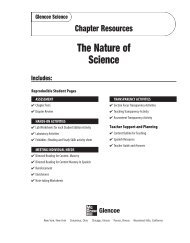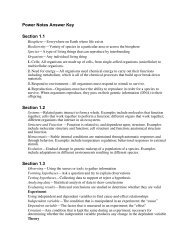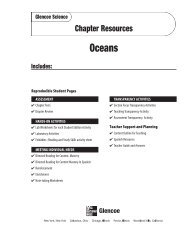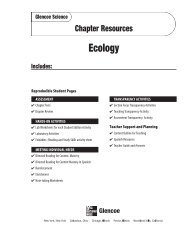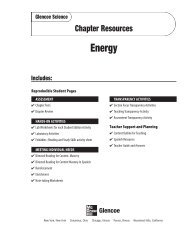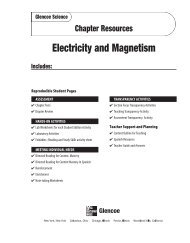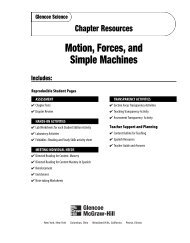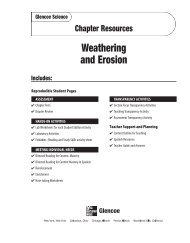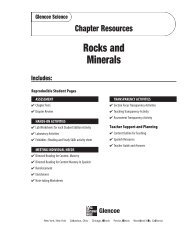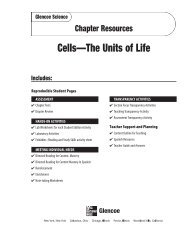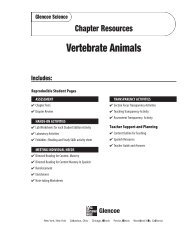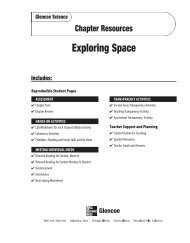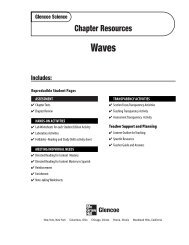Content Outline for Teaching - Potosi School District - Home
Content Outline for Teaching - Potosi School District - Home
Content Outline for Teaching - Potosi School District - Home
You also want an ePaper? Increase the reach of your titles
YUMPU automatically turns print PDFs into web optimized ePapers that Google loves.
8<br />
<strong>Content</strong> <strong>Outline</strong><br />
<strong>for</strong> <strong>Teaching</strong><br />
Waves<br />
Underlined words and<br />
phrases are to be filled<br />
in by students on the<br />
Note-taking Worksheet.<br />
Section 3<br />
Wave Behavior<br />
A. Reflection—when a wave strikes an object or surface and bounces off<br />
B. Refraction—when a wave bends and changes speed as it moves from one<br />
medium to another<br />
C. Diffraction—the bending of waves around a barrier<br />
D. Interference—two or more waves combine and <strong>for</strong>m a new wave.<br />
1. Constructive interference—the crest of one wave overlaps the crest of another<br />
wave, making a larger wave.<br />
2. Destructive interference—the crest of one wave overlaps the trough of another<br />
wave, making a smaller wave.<br />
3. If waves with equal amplitude meet crest to trough, they cancel each other<br />
out.<br />
4. Interference can be used in hearing protection.<br />
Discussion Question<br />
How are refraction and diffraction similar and different? Similar—both involve wave<br />
bending; different—refraction’s bending is caused by a medium change while diffraction’s<br />
bending is caused by a barrier.<br />
Waves 25




